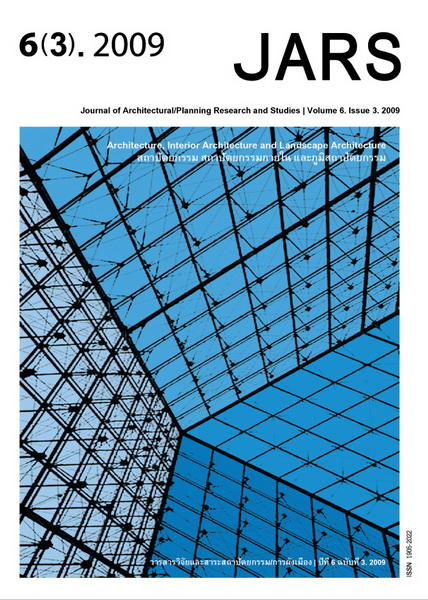Human Habitat: Searching for a Response to Sustainable Development in the Eastern Plains of Colombia
Main Article Content
Abstract
This study presents the “Human Habitat Concept,” an alternative resettlement proposal for internal
displaced people. The research focuses on planning and architectural issues related to sustainable development,
as outlined on the Brundtland Report: “Meeting the needs of the present generation without compromising
the ability of future generations to meet their needs.” (Brundtland, 1987). A sustainable settlement is defined,
here, as one economically self-sufficient; socially self-determining; and environmentally self-supporting.
The research is a theoretical/practical one based on a case study in the Eastern Plains of Colombia,
and its objective is to create a planning and design replicable platform for sustainable development in developing
countries; which can be adapted to different socio-economical and environmental scenarios. As a result, calculations
are proposed to show how the annual output of a settlement changes by accumulating, restoring and balancing
key components of the community. In particular, the study shows how the fusion between city and countryside,
and urban zoning contribute to the aims.
The final result is a framework to help urban and architectural decision-makers to choose the most
environmentally friendly and socio-economically responsible solutions, based on nature’s design/functioning;
in which a sustainable architecture is one that is: economically affordable; socially fulfilling; and environmentally
integrated.
Downloads
Article Details

This work is licensed under a Creative Commons Attribution-NonCommercial-NoDerivatives 4.0 International License.
All material is licensed under the terms of the Creative Commons Attribution 4.0 International (CC-BY-NC-ND 4.0) License, unless otherwise stated. As such, authors are free to share, copy, and redistribute the material in any medium or format. The authors must give appropriate credit, provide a link to the license, and indicate if changes were made. The authors may do so in any reasonable manner, but not in any way that suggests the licensor endorses you or your use. The authors may not use the material for commercial purposes. If the authors remix, transform, or build upon the material, they may not distribute the modified material, unless permission is obtained from JARS. Final, accepted versions of the paper may be posted on third party repositories, provided appropriate acknowledgement to the original source is clearly noted.
References
Ahmadjian, V., & Paracer, S. (2000). Symbiosis: An introduction to biological associations. Oxford (Oxfordshire): Oxford University Press.
Arco, L. J., & Abrams, E. M. (2006). An essay on energetics: The construction of the Aztec chinampa system. Antiquity BNet. Retrieved February 11, 2009, from www.findarticles.com/p/articles/mi_hb3284/is_310_80/ai_n29321539
Benyus, J. (2007). Nature as model, measure and mentor. Missoula, MT: Biomimicry Institute. Retrieved August 31, 2008, from www.biomimicry.net/
Berg, P. (1978). Reinhabiting a separate Country: A bioregional anthology of Northern California. San Francisco: Planet Drum.
Blicq, D. (2008). Bio-design. Manitoba, Canada: Red River College. Retrieved November 12, 2008, from http://xnet.rrc.mb.ca/davidb/biomimcry.htm
Brundtland, G. H. (1987). Our common future. Oxford: Oxford University Press: United Nations World Commission on Environment and Development.
Christensen, B. (1994). A soucebook for green and sustainable building. Austin, TX: Sustainable Sources. Retrieved August 31, 2007, from www.greenbuilder.com/sourcebook/
Departamento Administrativo Nacional de Estadistica. (2009). Censo 2005. Bogota, DC: DANE. Retrieved January 5, 2009, from http://www.dane.gov.co/
Echanove, M. (2004). Bogota at the edge: Ciudad Bolivar. New York: Urbanology. Retrieved April 17, 2007, from http://www.urbanology.org/Bogota
Global Footprint Network. (2008). Advancing the science of sustainability. Oakland, CA : Global Footprint Network. Retrieved Apirl 17, 2007, from http://www.footprintnetwork.org/
Guild Biomimicry. (2009). Biomimicry. Helena, MT: Guild Biomimicry. Retrieved August 7, 2009, from http://www.biomimicryguild.com/guild_contact.html
Guterres, A. H. (2007). 2007 Global trends. Geneve, Switzerland: The Office of the United Nations High Commissioner for Refugees (UNHCR).
Howard, S. E. (1902). Garden cities of to-morrow. Cambridge. MA.: MIT Press.
Luxton, C. (2001). Bionic buidings. London: BBC. Retrieved August 31, 2007, from www.bbc.co.uk/bbcthree/tv/bionic_buildings/gallery11.shtml
Malthus, T. (1789). An essay on the principle of population. London: J. Johnson.
Owen, R. (1991). A new view of society. London: Penguin Classics.
The Global Development Research Center. (2008). Carrying capacity. Kobe, Japan: The Carrying Capacity Network. Retrieved March 4, 2009, from www.gdrc.org/uem/footprints/carrying-capacity.html
United Nations Committee on Economic, Social and Cultural Rights. (1995). Conference on Human Settlements (HABITAT II). Nairobi, Kenya: United Nations.
United Nations Committee on Economic, Social and Cultural Rights. (1996). Conference on Human Settlements (HABITAT II). Istanbul, Turkey: UN-HABITAT.
United Nations. (1992a). Conference on Environment and Development. Rio de Janeiro, Brazil: Department of Economic and Social Affairs.
United Nations. (1992b). Conference on Environment and Development. Rio de Janeiro, Brazil. Retrieved June 24, 2005, from http://www.unep.org/Documents.Multilingual/Default.asp?documentid=78&articleid=1163
United Nations Development Program. (2000). Millennium declaration and its goals (MDG). New York: United Nations.
United Nations Framework Convention on Climate Change. (1997). Kyoto Protocol. Kyoto, Japan: United Nations Framework Convention on Climate Change.
United States Department of International Information Programs. (2001). The Andes under Siege: Environmental consequences of the drug trade. Fullerton, CA: Environmental Studies Program Office. Retrieved April 17, 2007, from http://hss.fullerton.edu/envstud/links_region-specific.htm
Wackernagel, W. E. (1995). Our ecological footprint: Reducing human impact on the Earth. Gabriola Island, BC, Canada: New Society Publishers.
World Bank. (2009). Colombia data. Retrieved April 17, 2007, from www.web.worldbank.org/WBSITE/EXTERNAL/COUNTRIES/LACEXT/COLOMBIAEXTN/0,menuPK:324985~pagePK: 141132~piPK:141109~theSitePK:324946,00.html


